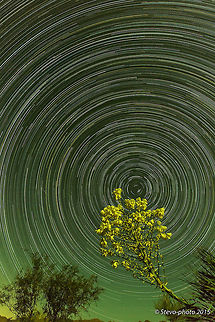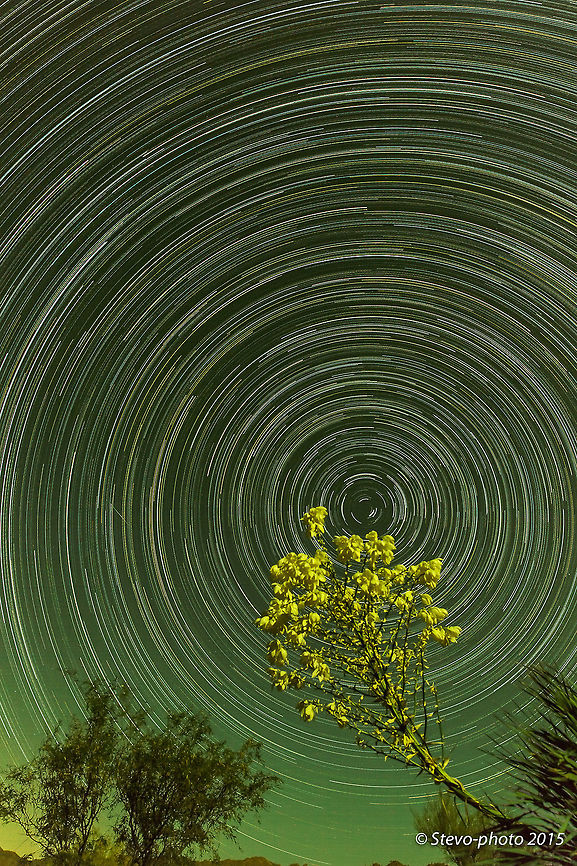
''Yucca schidigera'', also known as the Mojave yucca or Spanish Dagger, is a flowering plant that is native to the Mojave Desert, Chihuahuan Desert and Sonoran Desert of southeastern California, Baja California, New Mexico, southern Nevada and Arizona.
This yucca typically grows on rocky desert slopes and creosote desert flats between 300–1,200 metres altitude, rarely up to 2,500 metres . They thrive in full sun and in soil with excellent drainage. It also needs no summer water. It.. more
Similar species: Agaves, Aloes, Onions
By Stephen Philips
All rights reserved
Uploaded May 8, 2015.


comments (15)
Star shots most likely:
30 secs
f/4
16mm
iso 320
Exposed some foreground elements with flash (adjusted WB post).
Then stacked complete set with black frame Posted 10 years ago, modified 10 years ago
Let's do some simple math:
30 secs exposure plus 3 sec delay between shots = 33 secs/image
700 images x 33 secs = 23,100/60 secs = 385 minutes / 60 min = approx. 6 hours and 25 minutes of sleep time! Posted 10 years ago
"This stunning photo highlights a blooming Mojave yucca (Yucca schidigera) with a background of star trails! Absolutely gorgeous! Mojave yucca is a flowering plant that is native to the southwestern United States where it grows on rocky desert slopes. One of the most interesting aspects of yucca ecology is its mutualistic relationship with its sole pollinator, the yucca moth (Tegeticula yuccasella). These moths collect pollen from yucca flowers, form it into a ball, carry it to other flowers, and push it down into the stigma tube. The moths will then lay eggs in the ovary after fertilizing the flowers. Once they hatch, the moth larvae feed on a small number of seeds (around 3%) and leave the rest to develop. The plants are so dependent on this process that during years when the yucca moth is not abundant, sexual reproduction may not occur for the Mojave yucca. {Spotted in Arizona, USA by JungleDragon user, Stephen Philips} #JungleDragon" Posted 7 years ago